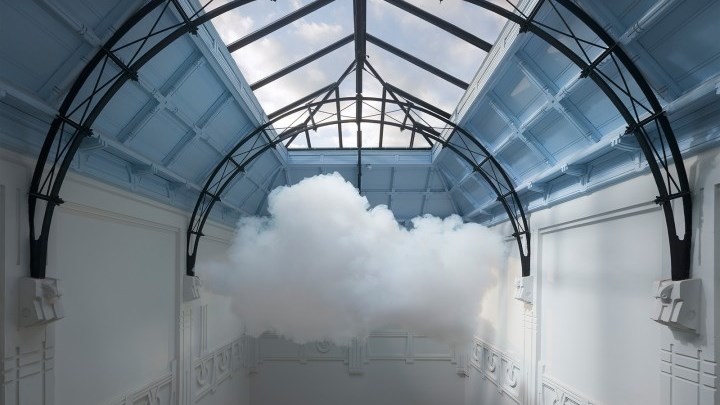Arts
How Dutch artist creates clouds─── 17:19 Wed, 05 Oct 2022

It’s been ten years since Dutch artist Berndnaut Smilde enthralled the world with his cloud artworks. But how exactly did he manage to create these magnificent works of art?
According to Paula van den Bosch, curator of the Bonnefantenmuseum in Maastricht in the Netherlands, Smilde followed in the illustrious footsteps of 17th century Dutch painters, Jacob van Ruisdael and Jan van Goyen, who were mesmerised by the country’s cloudy skies, and created Nimbus II: a hovering indoor cloud in the empty setting of a sixteenth-century chapel in Hoorn.
“The Netherlands may not be known for its beautiful weather, but it can boast its cloudy skies. Holland’s magnificent cumulus clouds, also known as thunder clouds, inspired many artists in the course of centuries.”
She explains that Smilde needed a smoke-machine, a highly increased level of humidity, and some dramatic lighting to complete the feat.
“In Smilde’s hands, a semi-opaque cloud of tiny water-drops turned into an ambiguous dramatic sign.”
However, when asked about his intentions Smilde stayed aloof: “On the one hand I wanted to create an ominous situation. You could see the cloud as a sign of misfortune. You could also read it as an element out of the Dutch landscape paintings in a physical form in a classical museum hall.”
Whether it was meant as an ominous sign or not, the cloud photo instantly triggered many around the globe. While a limited edition of the cloud photograph quickly made its way to galleries and private collectors the image went viral and also attracted the attention of the glorious art collector Charles Saatchi, who immediately bought Nimbus II for his London museum.
In the same year Time Magazine decided to include Smilde’s rain cloud in its ‘Top 10 Inventions of 2012’-list.
Smilde describes the Nimbus works as presenting a transitory moment of presence in a specific location.
“They can be interpreted as a sign of loss or becoming, or just as a fragment from a classical painting. People have always had a strong metaphysical connection to clouds and through time have projected many ideas on them.”
Smilde is also interested in the temporary aspect of the work. It’s there for a few seconds before they fall apart again.
“The photo functions as a document of something that happened on a specific location and is now gone.”
Read more about Smilde here.













